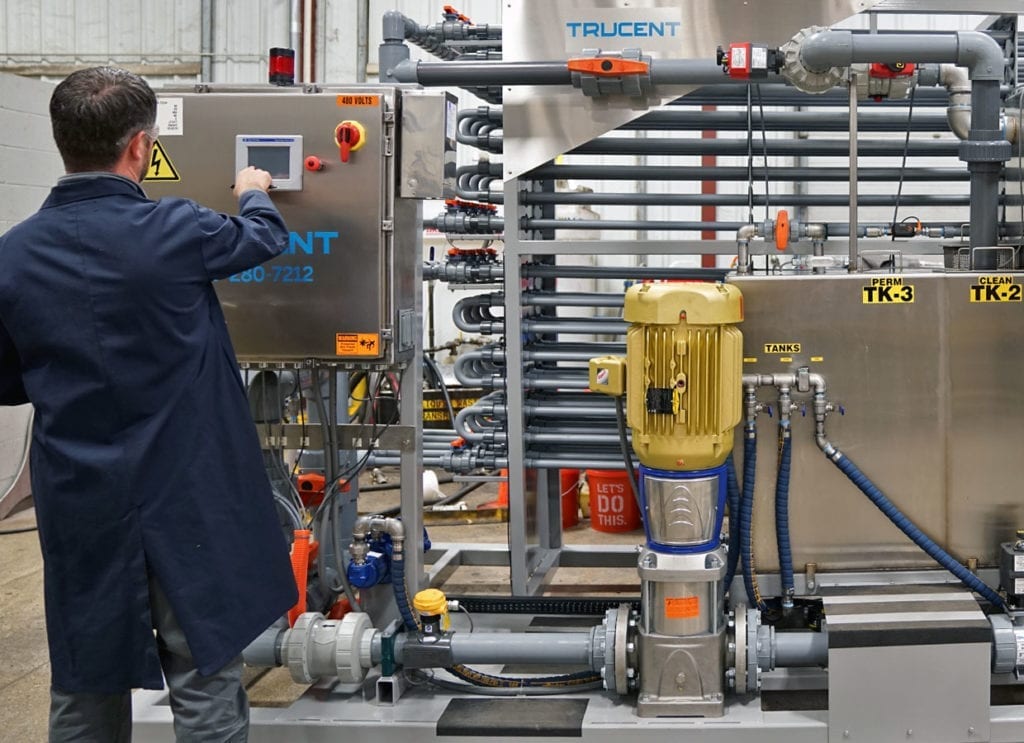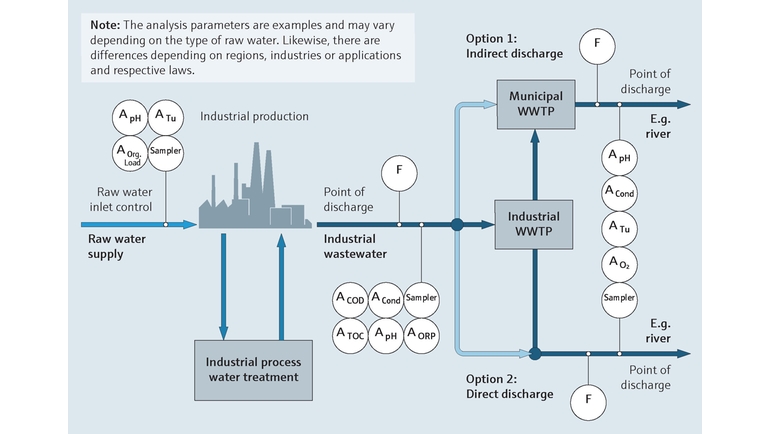Trick Techniques in Industrial Waste Water Treatment Processes
The therapy of industrial wastewater is an important facet of ecological monitoring, including a variety of methods designed to minimize the impact of impurities. Improvements in technologies such as membrane layer filtering and progressed oxidation procedures use cutting-edge services for boosting therapy efficiency.
Physical Therapy Techniques
Exactly how properly can physical therapy approaches resolve the complexities of industrial wastewater? Physical therapy methods play a pivotal function in the initial stages of wastewater administration, focusing largely on the removal of solids and large particulates. Strategies such as sedimentation, flotation protection, and filtering are essential for decreasing the focus of put on hold solids, thus boosting the effectiveness of succeeding treatment processes.
Sedimentation includes the gravitational settling of solids, enabling for the separation of larger materials from the wastewater. This approach is particularly effective in making clear water prior to organic or chemical therapies.
Additionally, flotation approaches, which use air bubbles to raise suspended solids to the surface area for removal, work in dealing with wastewater with high concentrations of fats, oils, and greases. In general, physical therapy approaches act as a critical initial step in the detailed management of industrial wastewater, making certain that the load on subsequent therapy stages is lessened and boosting overall therapy effectiveness.
Chemical Therapy Strategies
While physical therapy techniques lay the groundwork for reliable wastewater administration, chemical treatment methods are crucial for attending to the extra complicated contaminants commonly found in industrial effluents. These techniques use various chemical representatives to precipitate, counteract, or oxidize hazardous materials, making sure a more detailed removal of contaminants.
One common strategy is coagulation and flocculation, where chemical coagulants such as aluminum sulfate or ferric chloride are contributed to advertise the gathering of put on hold particles. This process boosts solid-liquid separation, minimizing turbidity and enhancing water quality. Furthermore, neutralization procedures are employed to change the pH of wastewater, making use of bases or acids to reduce the effects of acidic or alkaline streams, specifically.
Oxidation-reduction responses play a crucial role in derogatory natural contaminants and pathogens. Chemical oxidants like hydrogen, chlorine, or ozone peroxide are used to damage down intricate organic compounds, making them much less hazardous or extra biodegradable. Advanced oxidation procedures (AOPs) combine multiple oxidation strategies to enhance pollutant removal effectiveness.
Biological Treatment Procedures
The performance of wastewater therapy is significantly enhanced by biological therapy procedures, which harness the all-natural metabolic tasks of bacteria to disintegrate natural matter and remove pollutants. Industrial Waste Water Treatment. These processes mainly include aerobic and anaerobic digestion, each tailored for particular kinds of wastewater
Aerobic treatment procedures make use of oxygen to support microbial development, advertising the malfunction of organic toxins into co2 and water. Typical techniques include activated sludge systems, where aeration tanks promote the blending of wastewater with bacteria, and trickling filters, which motivate biofilm development on media surface areas.
Alternatively, anaerobic treatment processes occur in the absence of oxygen, making use of anaerobic germs to break down raw material, leading to biogas production, a renewable resource source. Anaerobic digesters are commonly utilized in commercial settings for this purpose, properly lowering the volume of sludge while generating beneficial biogas.
The choice of an organic treatment method relies on wastewater attributes, treatment objectives, and regulative requirements. The assimilation of biological procedures in wastewater treatment not just boosts pollutant elimination efficiency however likewise promotes sustainability by decreasing chemical usage and sustaining resource healing.
Advanced Oxidation Processes

Typical AOP techniques include Fenton's photocatalysis, reagent, and ozonation. Fenton's reagent, a combination of hydrogen peroxide and ferrous iron, catalyzes the formation of hydroxyl radicals, making it reliable for treating wastewater consisting of phenolic compounds and various other stubborn substances. Ozonation uses ozone as an effective oxidant, capable of deteriorating a large variety of organic contaminants while all at once decontaminating the effluent. Photocatalysis employs light-activated stimulants, such as titanium dioxide, to enhance oxidation responses and get rid of contaminants.
AOPs supply several advantages, consisting of decreased sludge manufacturing and the capacity to deal with wastewater with high concentrations of organic contaminants. The application of AOPs calls for mindful consideration of operational criteria and cost-effectiveness, making certain that these advanced techniques are properly incorporated right into existing wastewater treatment systems.
Membrane Filtering Technologies

Microfiltration is i was reading this reliable for getting rid of suspended solids and germs, while ultrafiltration targets smaller organic molecules check over here and infections. Nanofiltration links the void between ultrafiltration and reverse osmosis, efficiently getting rid of organic substances and divalent ions. Reverse osmosis provides the highest level of purification, made use of primarily for desalination and removing mono-valent ions.
Membrane layer modern technologies supply countless benefits, consisting of reduced power consumption contrasted to traditional treatment methods, modular design for scalability, and the capacity for water healing and reuse. Nonetheless, challenges such as membrane fouling and the need for regular maintenance must be dealt with to make certain system efficiency. On the whole, membrane filtering innovations represent a vital component of modern industrial wastewater treatment approaches, advertising sustainability and resource preservation in water monitoring.
Final Thought
In conclusion, commercial wastewater therapy uses a varied array of methods, including physical, chemical, he has a good point biological, and progressed approaches. Continued innovations in these approaches will certainly further enhance the performance and efficiency of wastewater therapy procedures in industrial setups.
The therapy of commercial wastewater is an important aspect of environmental monitoring, involving a range of techniques developed to minimize the impact of pollutants.Just how properly can physical treatment techniques resolve the complexities of industrial wastewater?Advanced oxidation processes (AOPs) stand for an innovative strategy in commercial wastewater treatment, developed to efficiently degrade natural contaminants that are frequently resistant to traditional therapy techniques (Industrial Waste Water Treatment).In verdict, commercial wastewater therapy employs a diverse variety of strategies, including physical, chemical, organic, and progressed approaches. Proceeded innovations in these approaches will even more improve the effectiveness and effectiveness of wastewater therapy procedures in commercial setups